Please check back later for more on this topic.
Please check back later for more on this topic.
Please check back later for more on this topic.
Please check back later for more on this topic.
Please check back later for more on this topic.
Please check back later for more on this topic.
Charleston Arsenal: “Taken by force of arms”
In 1963, during an era of campus expansion, the Medical College of South
Carolina purchased the 11-acre former site of the Porter Military Academy
which was built on the location of the Charleston Arsenal. The Arsenal,
built by the U.S. Government between 1825 and 1832, stored small arms and
ammunition, and consisted of a gun-carriage for field artillery.
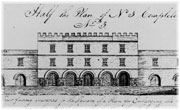
Charleston Arsenal, 1838
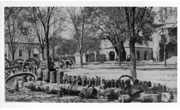
Confederate torpedoes, shot, and shells in front of the arsenal.
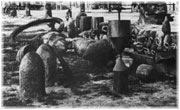
Confederate torpedoes, shot, and shell in the Arsenal yard.
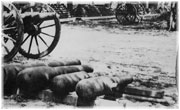
Blakely guns and ammunition in the Arsenal yard.
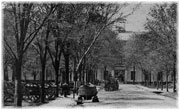
Rifled cannon in the Arsenal yard.
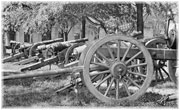
Rifled cannon in the Arsenal yard.
South Carolina Governor Francis Wilkinson Pickens ordered the State militia to surround the federal arsenal.
“On the 7th instant I received an order from Colonel Gardner, commanding troops in the harbor, to issue to him all of the fixed ammunition for small-arms (percussion caps, primers, &c) at this arsenal, such a step being advisable, in his estimation, for the better protection of the property in view of the excitement now existing in this city and State. Being allowed no discretion in the matter, his order being peremptory, I proceed to obey it on the afternoon of the 8th.” Frederick C. Humphrey, Military Storekeeper Ordnance, Commanding, to C.H.K. Craig, Chief of Ordnance, U.S.A., Washington, D.C., November 10, 1860
The arsenal remained under guard by both Federal and South Carolina troops until December 30, 1860, at which time the South Carolina militia surrounded the arsenal and demanded its immediate surrender.
Charleston, December 30, 1860 – 10½ o’clock a.m.
Sir: I herewith demand an immediate surrender of the U.S. Arsenal at this place and under your charge, and a delivery to me of the keys and contents of the arsenals, magazines, &c.
I am already proceeding to occupy it with a strong armed detachment of troops.
I make the demand in the name of the State of South Carolina, and by virtue of an order from its governor, a copy of which is inclosed.
Very respectfully,
John Cunningham
Colonel Seventeenth Reg. Inf., S.C.M.
--------------------------------------------------
Sir: This arsenal has to-day been taken by force of arms. What disposition am I to make of my command?
Frederick C. Humphreys to Capt. Maynadier, In charge of Ordnance Bureau, Charleston, S.C., December 30, 1860
Federal troops withdrew from the arsenal and relocated to Fort Sumter.
Throughout the war, Confederate forces used the arsenal for weapons and munitions storage, and manufacturing. In 1861 the Confederacy constructed a foundry used for casting, rifling and rebanding cannons.
With the fall of Charleston in 1864, Federal troops reoccupied the property until 1879, after which the arsenal never saw military use again.